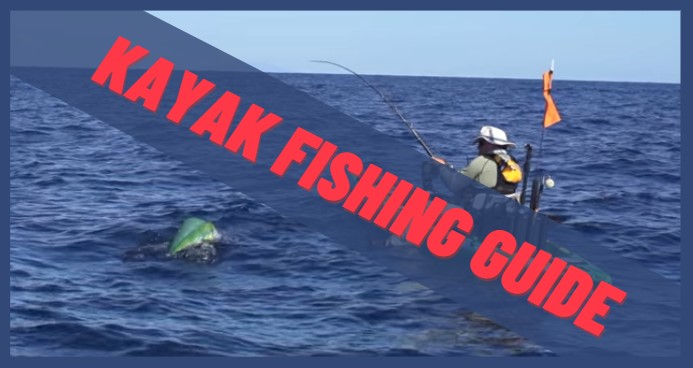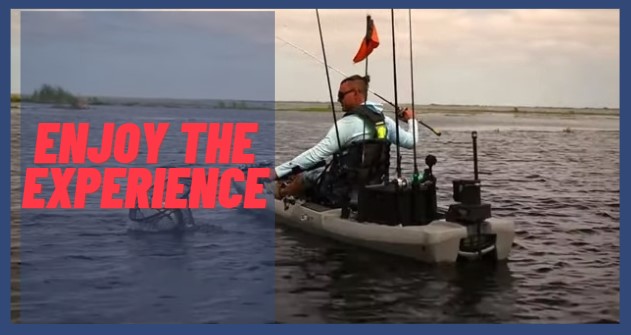Imagine gliding peacefully down a waterway in a kayak amidst nature. It evokes poetry, doesn’t it? Apart from the pure bliss of kayaking, a kayak opens plenty of possibilities for the avid angler. Unlike a motorboat, the silent kayak does not scare the
fish away. It will also take you to areas you did not have access to earlier.
And, if the above reasons were not enough, well-made kayaks are getting less pricey nowadays. You can find a good fishing kayak under 500!
But for someone new to boating, going on a kayak fishing trip can be daunting. We believe that a beginner must not be deprived of the sublime pleasures of kayak fishing.
With a few pointers and adequate preparation, a newbie can learn to paddle a kayak and fish from it pretty quickly. Our simple guide will ease you into the exciting world of kayak fishing. Read on to find out more.
-
Choose the right kayak
![choosing a kayak]()
One of the foremost aspects while buying a kayak is cost. There is a world of difference between a cheap kayak and a costlier kayak. A well-made kayak is safe, dependable, and will last for years. Scrimping on expenses while buying a kayak now, will make
you regret it later.
All kayaks are not made equal. Some are narrow for speed and some, wide for extra stability. Also, shorter kayaks offer better manoeuvrability than longer ones. For fishing, stability is crucial. You don’t want to tip over while casting or fighting a
fish. Apart from being stable, wider kayaks will have enough room to mount fishing rod holders and store tackle securely.
-
Equipping your kayak
Not all kayaks come pre-fitted with equipment. You need carefully consider a configuration that works for you. The following will give you a better idea.
Rod holders will free up your hands for other tasks. Many kayak fishermen have two to three rod holders in their kayak.
- A paddle holder helps you keep your paddle secure when you are fishing. You don’t want to lose your paddle in the middle of a lake. The paddle holder also keeps the paddle from getting in the way
of your cast.
- Never enter your kayak without a life vest. This can make a life or death difference in case of accidents.
- Consider a pedal system. Some kayaks provide room for a pedal system. This will be handy if you plan to install a pedal system in the future. Pedalling is less noisy than rowing. It will also help
keep your hands free while fighting a fish.
- A comfortable seat is more essential than some think. In many cases, the seat will determine how long you’ll be in the water.
- An anchor is invaluable when it comes to keeping your kayak steady while reeling in fish. For this purpose, you don’t even need a heavy anchor.
- Deck lines and cargo nets will help you store more equipment and are inexpensive.
-
Fishing from a kayak
Now that you’ve got your kayak equipped, hit the water. You can learn basic kayaking techniques quickly. Take an experienced kayaker along or check on YouTube for techniques. However, just learning to paddle is not enough
You must learn to cast and land fish from a kayak without tipping over. Staying close to the shore (for safety) in undisturbed water, practice gentle lobs at first. Once you get used to the wobbling kayak, practice for distance. The more time you spend
in a kayak, the better your body will cope with the wobbling.
Now that you have learned the basics of casting from a kayak, the next thing to get to know is landing the fish. Fight the fish once it is hooked and bring it close to the boat. The fish is so close that you can grab it with your hands. However, if you
try to do so, you will tip over
All you have to do now is move the rod to your other hand away from the fish and raise the rod’s tip gently. This will draw the fish from the water right in front of you and you can secure it with your free hand.
-
The importance of the right paddle
Often many newbies fail to buy the right paddle for their kayaks. When it comes to paddles for kayaks, the most important factor to consider is the length. The paddle’s length can be determined by the height of your torso (your height while sitting, from
the small of your back to your shoulder blades) and the width of the kayak.
-
Safety first
- Always inform your family or friends about your fishing plans.
- Never fish far off the shoreline during windy conditions.
- Take a GPS device to avoid getting lost.
- Wear suitable clothing for the conditions you expect.
- Carry necessary medicines and a first aid kit in waterproof containers.
-
Enjoy the experience
![guy kayak fishingk]()
As a beginner in kayak fishing, you need to spend as much time as possible trying to get to know your kayak. Enjoy the immersive experience amidst nature. Your focus should be more on the process rather than the results. You will only become better with
time.
Subscribe
Stay updated with our newsletter
Video: Click here to watch video
Conclusion
We believe that this guide will help choose your fishing kayak with care and let you hit the waters with confidence. Once you get hooked on kayak fishing, your fishing expeditions will be filled with the twin joys of kayaking and landing fish from inaccessible
waters.



